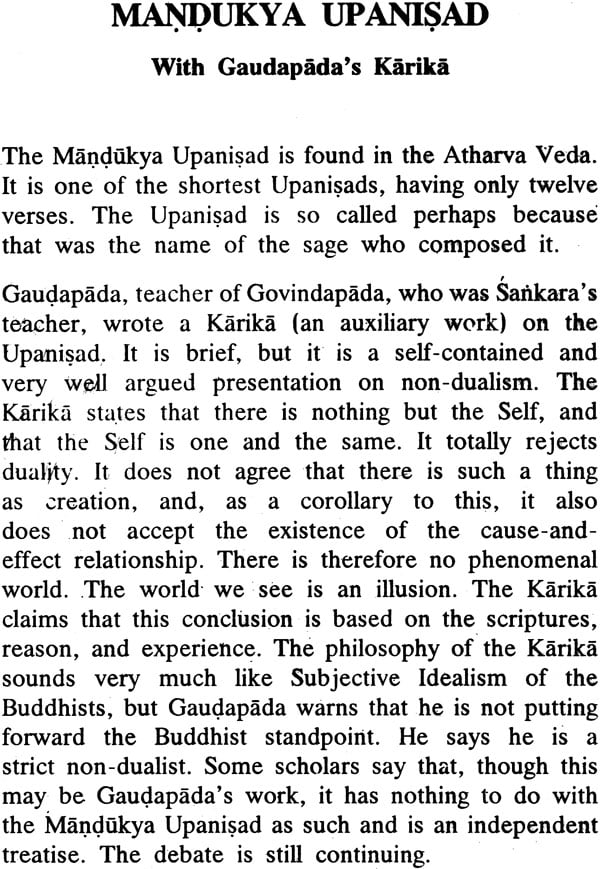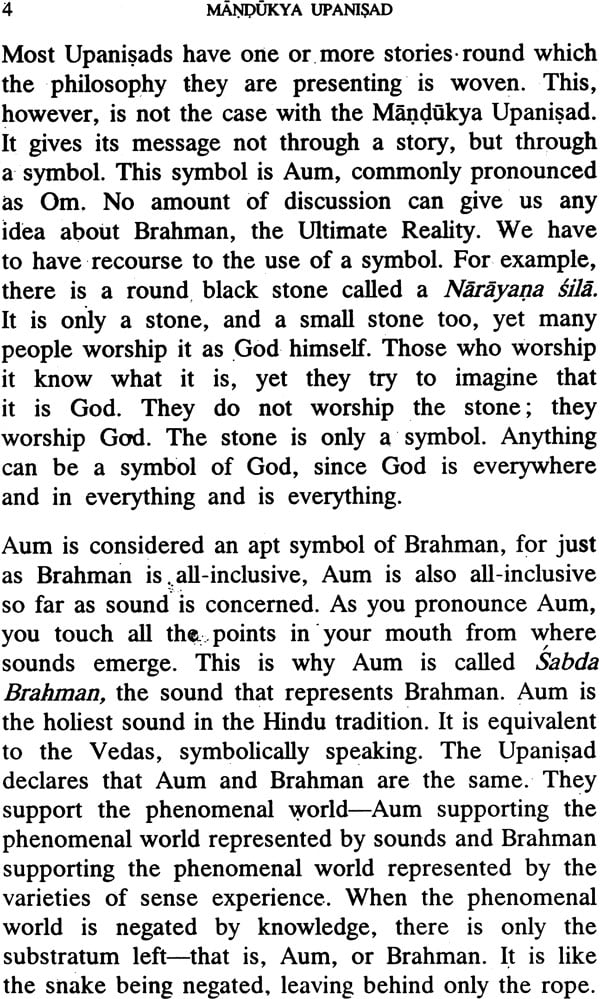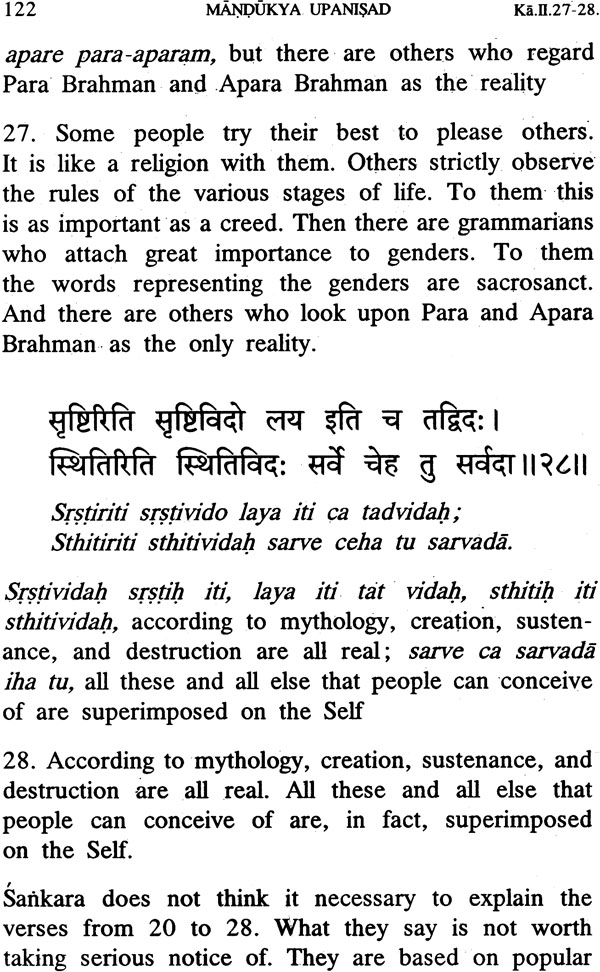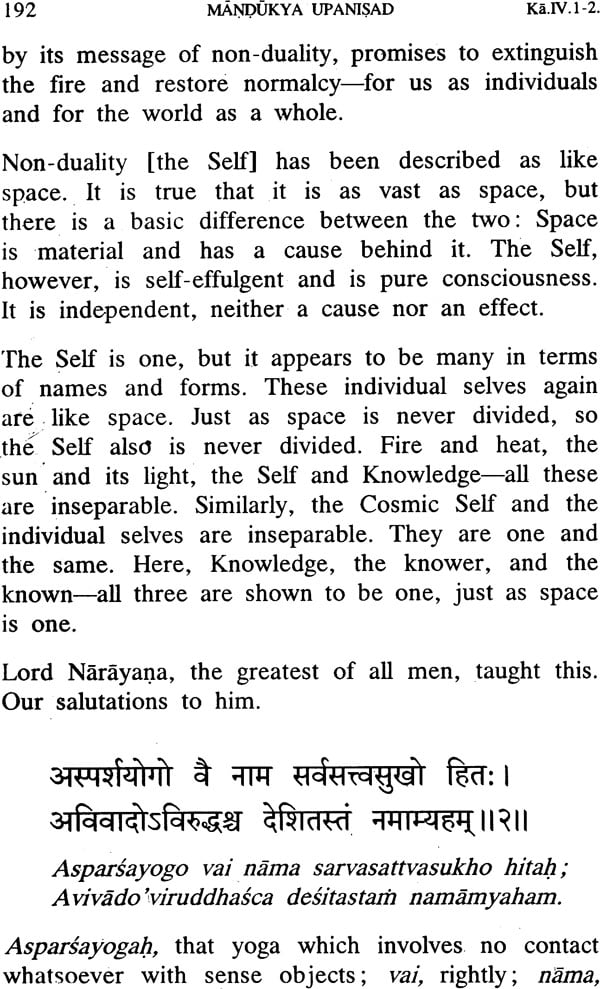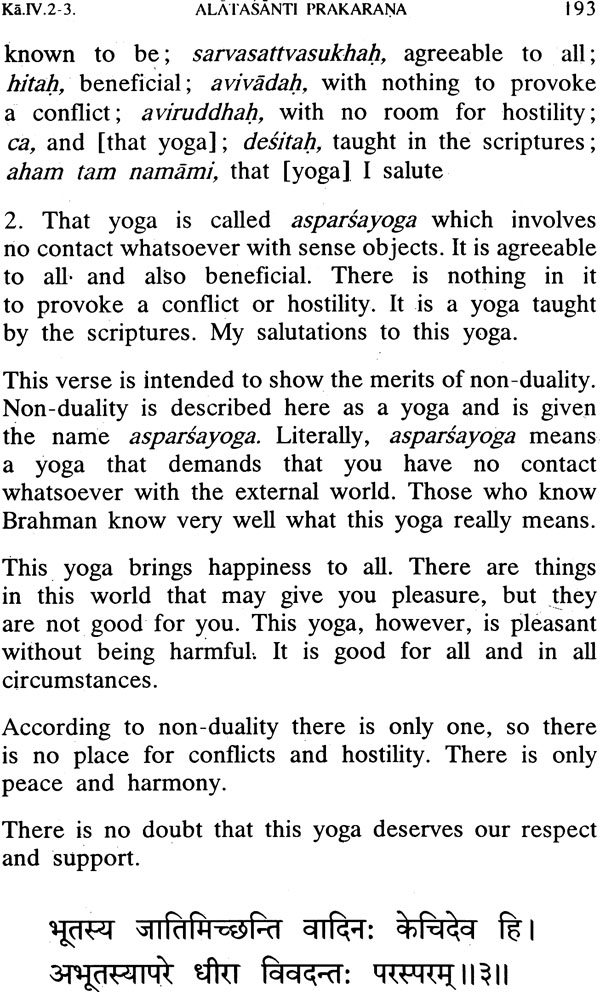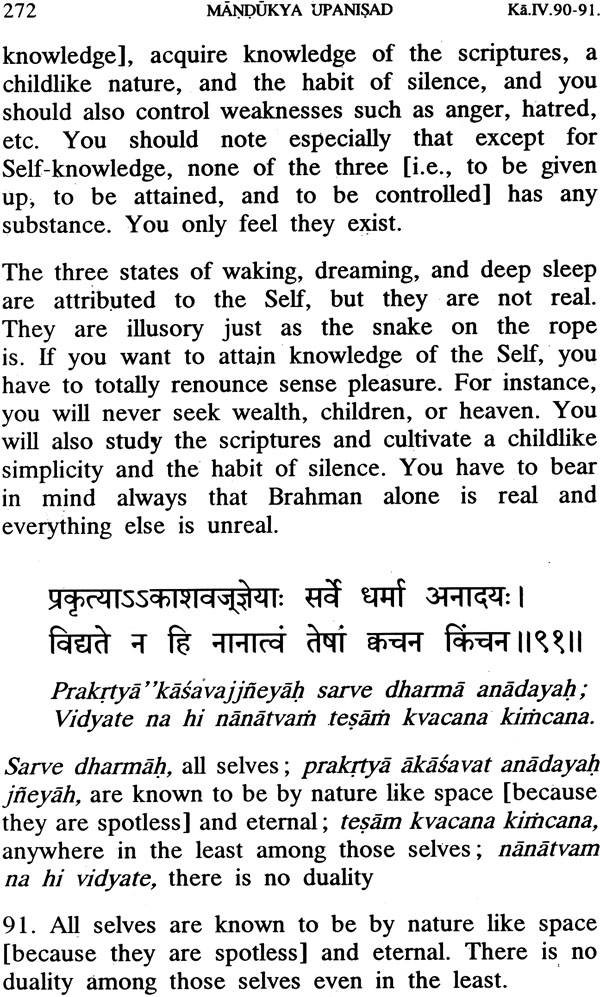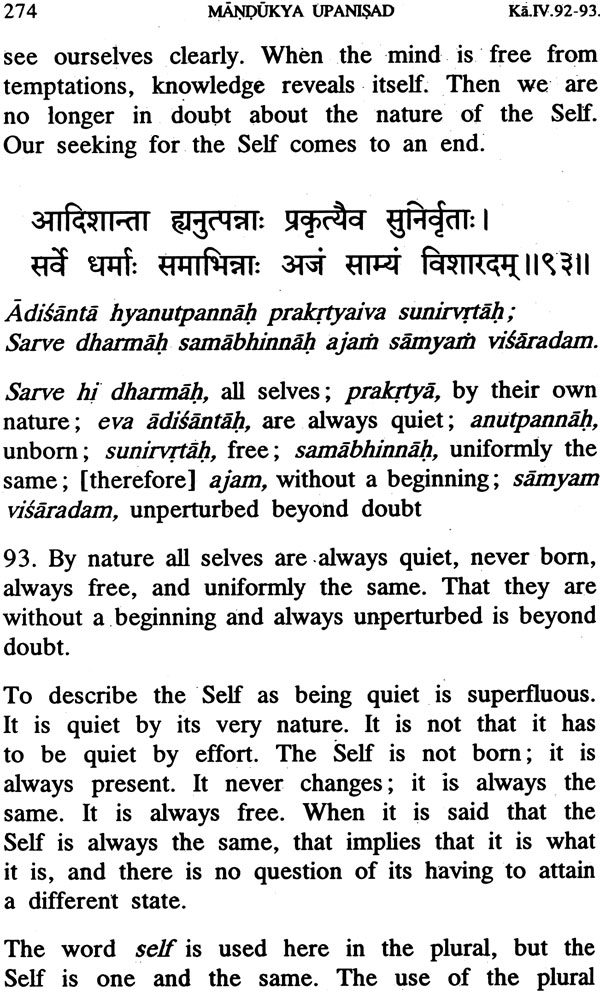
Mandukya Upanisad (With Gaudapada's Karika) - Translated and with Notes Based on Sankara's Commentary
Book Specification
| Item Code: | NAE567 |
| Author: | Swami Lokeswarananda |
| Publisher: | Ramakrishna Mission Institute of Culture |
| Language: | English |
| Edition: | 2022 |
| ISBN: | 9788185843711 |
| Pages: | 288 |
| Cover: | Paperback |
| Other Details | 8.5 inch x 5.5 inch |
| Weight | 300 gm |
Book Description
The Mandukya Upanisad is found in the Atharva Veda. It is one of the shortest Upanisads, having only twelve verses. The Upanisad is so called because that was the name of the sage who composed it.
Gaudapada, teacher of Govindapada, who was Sankara's teacher, wrote a Karika (an auxiliary work) on the Upanisad, It is brief, but it is a self-contained and very well argued presentation on non-dualism. The Karika staties that there is nothing but the Self, and that the Self is one the same. It totally rejects duality. It does not agree that there is such a thing as creation, and, as a corollary to this, it also does not accept the existence of the cause-and-effect reationship. There is therefore no phenomenal world. The world we see is an illusion. The Karika claims that this connclusion is based on the scriptures, reason, and experience. The philosophy of the Karika sounds very much like Subjective ldealism of the Buddhists, but Gaudapada warns that he not putting forward the buddhist standpoint. He says he is astrict non-dualist. Some scholars say that, though this may be Gaudapada's work, it has nothing to do with the Mandukya Upanisad as such and is an independent treatise. The debate is still continuing.
MostUpanisads have one ormore stories round which the philosophy they are presenting is woven. This, however, is not the case with the Mandukya Upanisad. It give its message not through a story, but through a symbol. This symbol is Aum, commonly pronounced as Om. No amount of discussion can us any idea about Brahman, the Ultimate Reality. We have to have recourse to the symbol. For example, there is a round black stone called a Narayana sila. It is only a stone, and a small stone too, yet many people worship it as God himself. Those who worship it know what it is, yet they try imagine that it is God. They do not worship the stone; they worship God. The stone is only a symbol. Anything can be a symbol of God is everywhere and in everything and is everything.
Aum is considered an apt symbol of Brahman, for just as Brahman is all-inclusive, Aum is also all-inclusive so far as sound is concerned. As you pronounce Aum, you touch all the points in your month from where sounds emerge. This is why Aum is called Sabda Brahman, the sound that represents Brahhan. Aum is the holiest sound in the Hindu tradition. It is equivalent to the vedas, symbolically speaking. the Upanisad declares that Aum and Brahman are the same. They support the phenomenal world-Aum supporting the phenomenal world represented by sounds and Brahman supporting the phenomenal world represented by the varieties of experience. When the phenomenal world is negated by knowledge, there is only the snake being negated, leaving behind only the rope.
But how do you meditate on Aum?First, you meditate that in your waking state you are Virat-that is, Brahman as the sum total of all physical bodies. This is represented by A, the first letter of Aun. Next You imagine that when you are Hiranygarbha-Brahman as the sum total of all minds, which is U of Aum. Then you imagine that when you have sound sleep you are one with lsvara, which is Brahman associated with its power of maya. This is represented by M of Aum. So far you are within the domain of ignorance. If You are able to go still further, beyond all letters, beyound Aum, then you become one with turiya pure consciousness. You are then amatra, bevond duality. You are Brahman.
This is how Aum helps you reach the goal of life. You are always Brahman, but somehow or other you are not aware of it. One way to dispel this ignorace is to continually remind yourself that you are Brahman. If you do it the waking state, its effect will follow through in your dreaming and deep sleep states though in your dreaming and deep sleep states also. And it will eventually take you to turiya.
| Invocation | 1 |
| Introduction | 3 |
| Agama Prakarana | 6 |
| Vaitathya Prakarana | 87 |
| Advaita prakarana | 136 |
| Alatasanti Prakarana | 190 |
